If you’re new to BLK South, welcome. We’ve just begun our pilgrimage of reverse migration—from Phoenix, AZ to Durham, NC—and we’re currently writing to you from Austin, TX. Along the way, we’re reflecting on each stop, starting with our time in Taos, NM, where we visited our dear friends Chris and Kate Townley. For the summer, we’ll be writing more frequently here on Substack, sharing stories from the road. Our regular weekly reflections will resume in the fall.
It’s a powerful thing to choose where you want to go. That choice, especially for Black folks in this country, hasn’t always been possible. For so many of our ancestors, movement was about survival, not freedom. But even survival carries the spark of liberation.
I think about my Uncle Boosie—my great Uncle Jimmy Moore—who is the oldest living relative on my maternal side. We call him Uncle Boosie with love and reverence. He escaped Mississippi in the middle of the night in 1958, hitching a ride to Chicago. He was just 17 years old and had already spent years sharecropping in the cotton fields. But he doesn’t call it sharecropping. He calls it what it really was: another form of slavery. Leaving was his declaration of freedom, his body refusing to participate in his own oppression any longer.
That memory stayed close to me while in Taos, New Mexico—our first stop on this reverse migration journey. I’ve been incredibly in tune with how I feel on this pilgrimage. The tears. The curiosity. The sleepless nights filled with excitement. I imagine my family—Granny, Grandma, Uncle John, Uncle Boosie—felt similar waves of emotion when they migrated from Mississippi to Chicago in the 1950s and ‘60s. A choice, yes. But also a weight. And a hope.
Chris and Kate Townley, our dear friends, chose this place. They chose Taos for its stillness, its sage bushes, its sweeping views of the Rocky Mountains. For its dirt. For its healing. Chris and I pastored together for nearly five years at Kaleo Phoenix, and he has been like a brother to Kendall for even longer. Chris officiated our wedding, and they both came to celebrate that day with us. Being with them here was so special to us.
Chris and Kate live simply on 16 acres of land, working every day toward building their own earthen home—crafted from rock, sand, adobe, straw, water, and other natural materials. They have to make 20,000 bricks. Yes, you read that right. Twenty thousand. And in true Erin fashion, I insisted on helping move some of those bricks to feel like I was part of what they’re building.
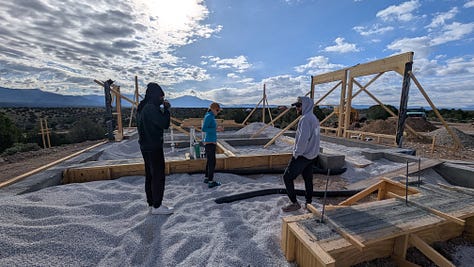
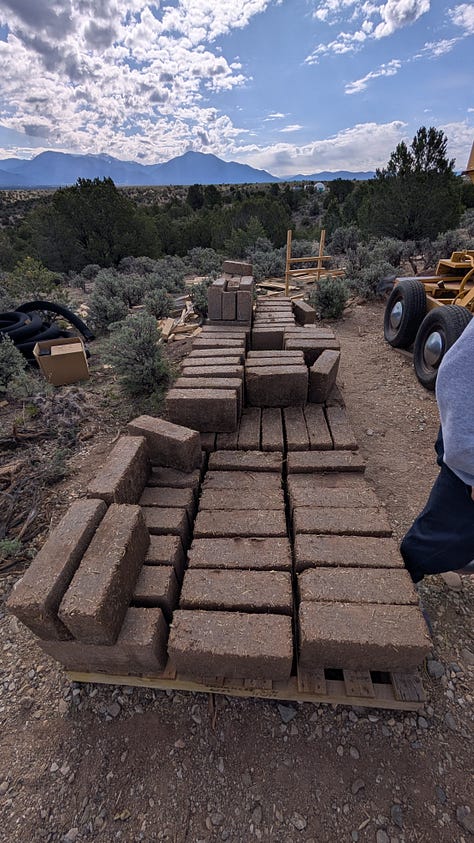

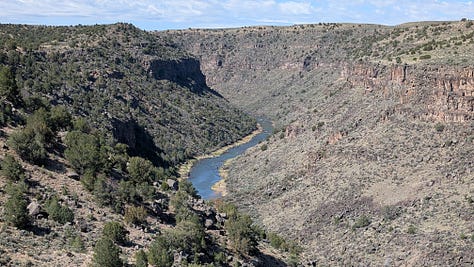

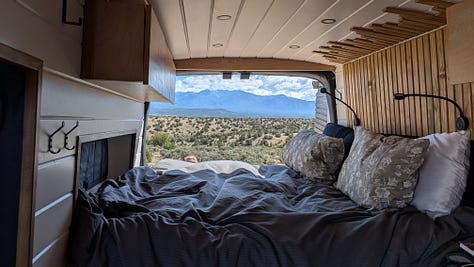
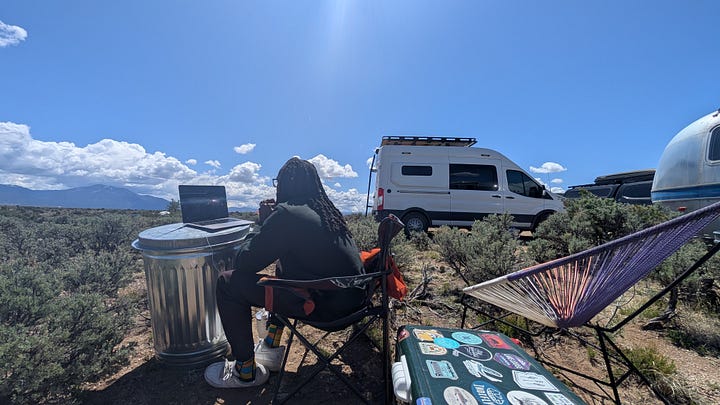
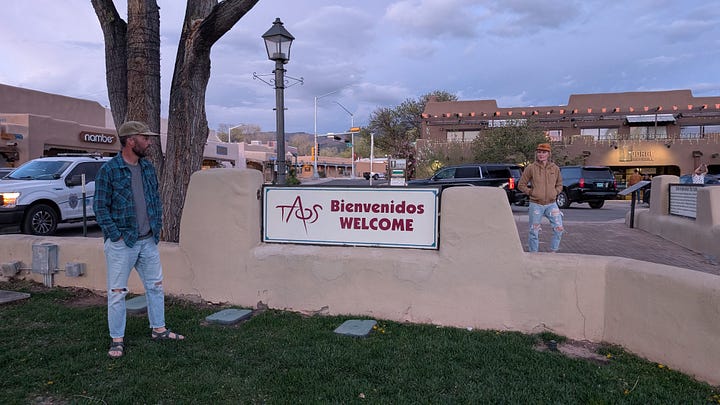
Whewww, baby. Those bricks weigh 30+ pounds each. I loaded about eight on a wagon, dragging them across dirt paths, scattered screws, and small hills. At one point, I told myself, “What have I gotten myself into?” But I had already made a self-contract—I was determined to finish the job.
Kate gently reminded me to drink water—high elevation is no joke. I agreed and said, “Bet, I’ll grab water and come right back.” Well… I got the water, handed some to Kendall, sat down for a second, and said to myself, “I ain’t going back.” 😆 Chille, my ancestors were telling me to sit my Black a** down! I could hear them saying, “We don’t do labor like that no more!”
Chris and Kate never asked us to help—of course they didn’t. They know the lineage we come from. They understand the weight of history and honor the sacredness of Black life without needing a reminder. They didn’t expect us to lift a finger. But I wanted to immerse myself in their world, to feel what it’s like to work toward something so tangible and sacred. Eventually, I realized I had taken it a little too far—and sat my overzealous self down.
That first evening, we shared Taos pizza and a peppery arugula salad—Kate’s salads are always next-level, no matter the ingredients. The next morning, she whipped up a breakfast of eggs, sautéed peppers, and hot sauce that somehow tasted like sunshine. We traded snacks, swapped stories, laughed over dinner in town, and savored the beauty of simple, generous hospitality.
They’ve never lived in big houses, but they’ve always been generous.
That’s a word for us as we head to the South, too. We don’t need a mansion to be hospitable. We just need intention. Care. Openness. Presence.
On the car ride to Austin, Kendall and I reflected on what Taos taught us:
The significance of choosing a place—on your own terms.
The difficulty and the joy of working on something that makes you come alive.
That caring for your body is a form of resistance and sustainability.
That creation—plants, air, animals—deserve to be served and honored too.
That the land holds stories, just like people do.
Kate’s life work as an emergency medicine doctor is rooted in health and environmental justice—from minimizing plastic use and conserving water to honoring the earth’s natural materials. That passion is now taking shape through their long-term project of building an earthen home. It was a joy to witness the way she lights up when explaining the science behind it all. Chris and Kate are great examples of what it means to sacrifice for what makes you come alive—and to keep showing up for that calling, day after day.
We’ve been thinking about asset mapping—not just the people, but the land. What grows here? What’s native? What’s invasive? What’s sacred and in need of tending?
As we prepare to move into a historic Black neighborhood like Hayti, we ask: How do we serve the soil, the trees, the air? What would it mean to treat the land itself as a neighbor?
Taos reminded us to walk gently and often. To rest when needed. To work for what matters. To stop and smell the sage.
We love you, Townleys. Until next time.
We’ve launched a $25,000 Matching Campaign to support our next chapter in Durham. Thanks to generous anonymous donors, every dollar you give will be doubled—fueling our mission to uplift and invest in historic Black neighborhoods across the South. If you feel lead to give, use the link above.




We had so much fun and are so thankful you visited ❤️ Keep sharing this beautiful journey with us all! 🙏🏼